Visiting Gibbs Farm had been on my Bucket List for years, to take the trip north-west of Auckland to the Kaipara Harbour, to one of the charity fundraising days (which is the only way to see these sculptures), and finally I did it.
It’s not easy to find out how to buy tickets, what to take or even where it is, so I wrote this post to help you. Plus I’ve added a bunch of my favourite photos, taken on my iPhone 15, and you’ll see how we were so lucky with the weather as the sky cleared from threatening rain to blue skies and fluffy white clouds.
The incredible landscape is the first thing to wow you as you drive down the driveway, after turning off at Silverdale and heading west, and are met by volunteers who look at your tickets and give you a booklet explaining each of the 23 pieces of artwork.
Rolling hills reach down into the Kaipara Harbour, which is estuaral at low tide. The grounds are pristine and enormous sculptures rise up from hilltops, valleys and wide open spaces.
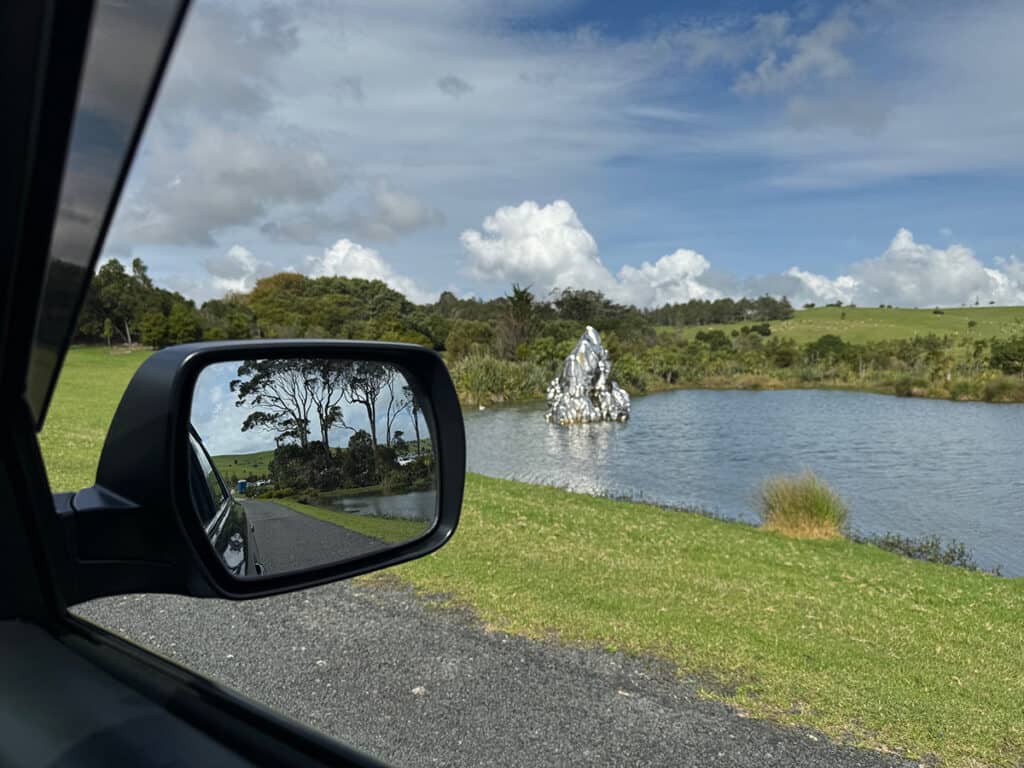
What is Gibbs Farm?
Gibbs Farm is a 400-hectare (990-acre) farm owned by rich-list New Zealander Alan Gibbs, who bought it in 1991 and has collected major art work from all over the world, as well as in New Zealand. What we have at Gibbs Farm is a collection of permanent commissioned pieces of a scale rarely seen.
“The challenge for the artists is a scale of the landscape; it scares them initially,” says Gibbs. “It demands something more from them.”
He is now based in the UK, but still owns the farm and allows charities to hold fund-raising events throughout the year to see the art that he often commissions. He doesn’t charge anything for these events, but allows all proceeds to go directly to the charities.
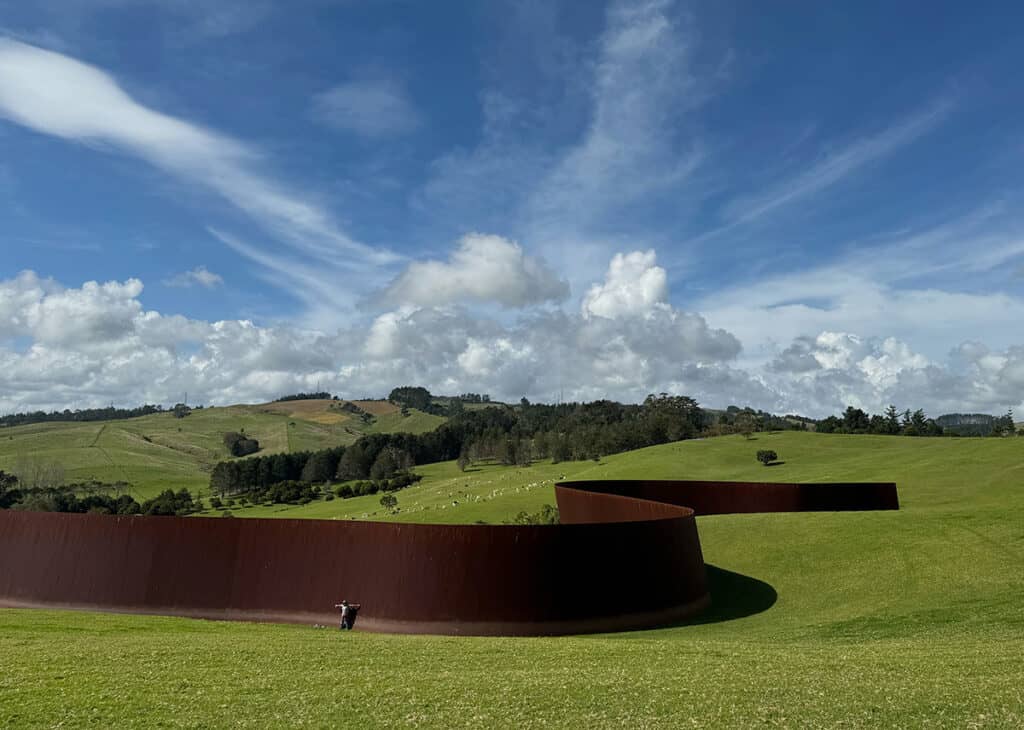
How do you get to Gibbs Farm?
You’ll need to make your own way there by car. I took two friends and we car-pooled. Most people had a few in their cars. Some groups arrived in vans from retirement villages – and they were actually allowed to be driven around the main road that winds around the land.
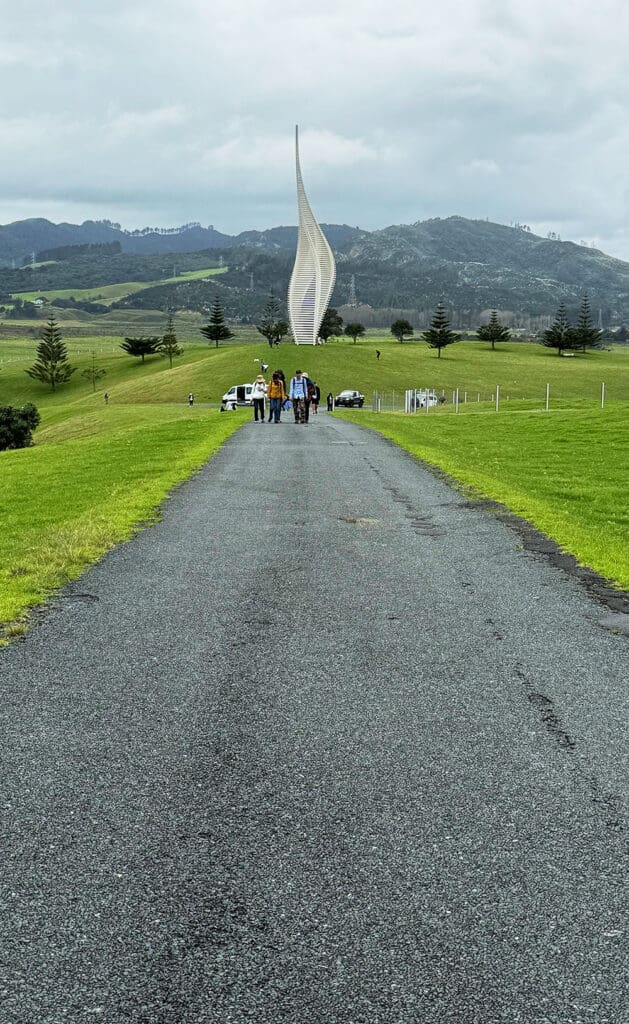
Do you need good fitness to walk around Gibbs Farm?
Yes you do. I mean you don’t need to be an athlete! But you have to be able to manage walking over hilly terrain (you can stay on sealed roads, but walking up the hills to get closer is what you’ll want to do). Expect to walk about 7,000 to 8,000 steps over three to four hours. You can take your time though and go at your own pace.
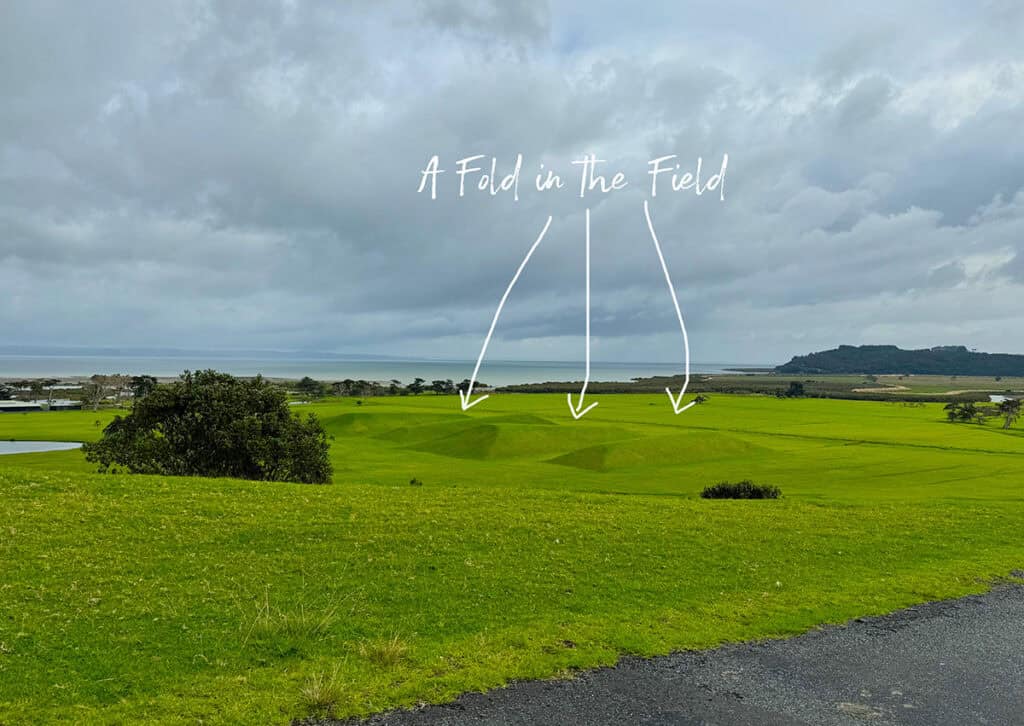
Are there exotic animals on the farm?
Indeed there are! We were fooled at first by the six-metre tall statue of a giraffe standing in a paddock with a smaller one standing nearby. Sharyn said the smaller one was moving its tail, but we told her she was dreaming. Then when we came back around it wasn’t standing there anymore.
We opened our booklet to find that indeed there are giraffes here, as well as emu walking around, lots of llamas and even zebras, goats.
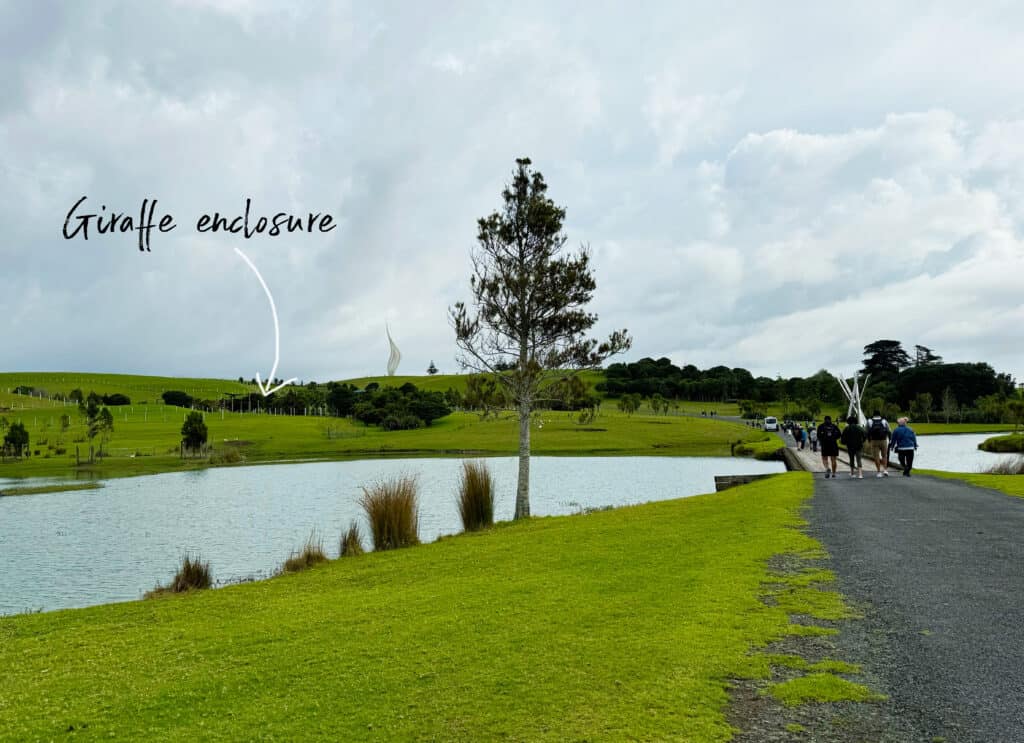
How do you know when Gibbs Farm events are on?
This is the tricky part. Because each event is a charity fundraiser, there are no set dates and even when you visit the Gibbs Farm website, there are often no dates loaded. I saw it come up on Facebook and as I follow Eventfinder, I also saw it there.
Check on the Gibbs Farm website in case you strike it lucky that an event is coming up.
Check on Eventfinder/GibbsFarm, which has upcoming dates (when they are confirmed).
Follow Gibbs Farm on Facebook for up to date news of upcoming events.
How much does it cost?
The price is set by the charity but around $90 plus booking fee for adults. Children are free.
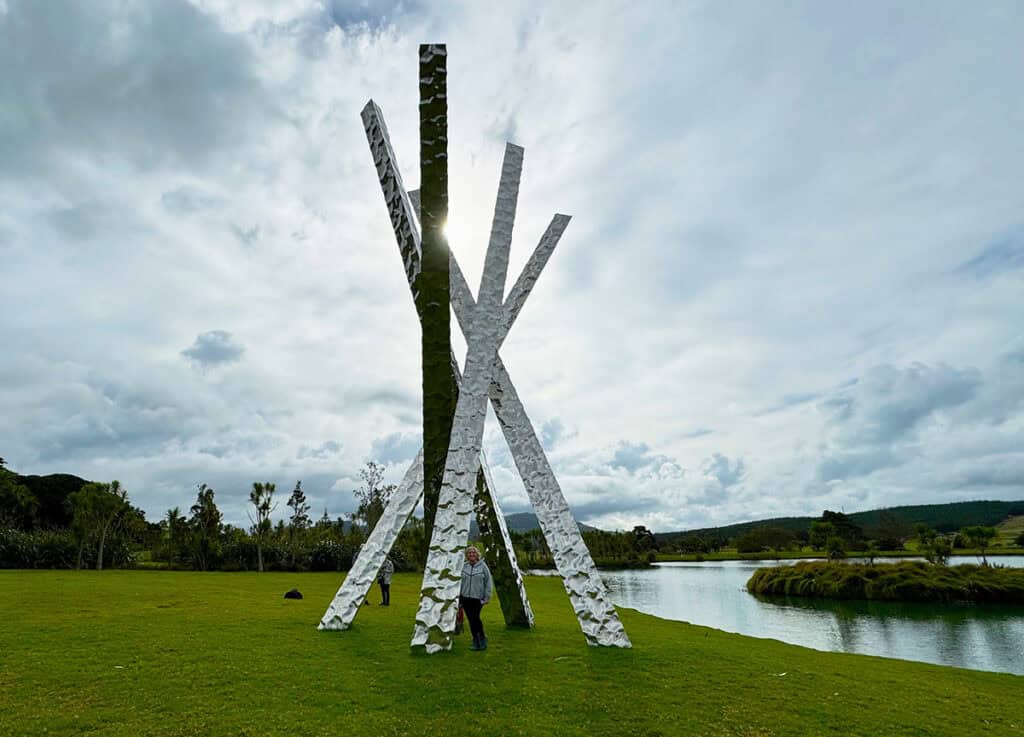
How long should I allow at Gibbs Farm?
The event we went to was only open from 10am-2pm. We were done, including our lunch stop, in three hours. You can come and go any time within these hours.
What should I take with me?
Great question! Take a picnic if you want to. There is so much wide open space, you can plonk down anywhere and eat. We took small backpacks with sandwiches, cake and a blanket, but found one of the few bench seats by the lily pond for our picnic, so didn’t need the picnic rug. (Thanks Deb for carrying it!)
There is no food to buy there, although there may be coffee carts.
Take water too as you’ll cover a lot of ground and even on a mild day you’re likely to work up a sweat. Some people had walking poles (not us!), but there are sealed roads that you walk along which pass most sculptures, although most people climbed the hills for closer inspection and to get photos.
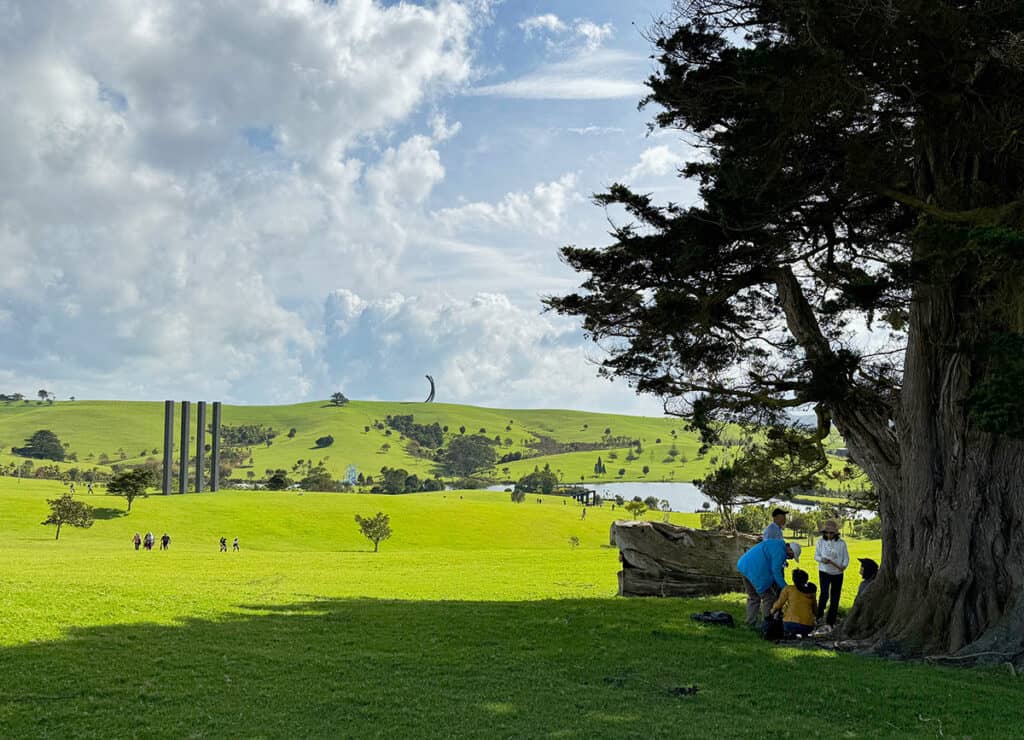
Is there anything to buy there?
Not unless the charity or group hosting the event has brought things to sell. You might find T-shirts or caps as fund raisers.
Are there toilets?
There are portaloos at the carpark, and I did spot more up high on a ridge.
Is it wheelchair/pushchair friendly?
Yes it is for the most part, although you’d definitely want anyone in a wheelchair to be in a motorised one, we decided. There’s a lot of up hills! We also noticed one of the local retirement villages brought some of their residents around in their small coach. Not sure how you get on one of those, but that’s the way to see it if you have mobility issues.
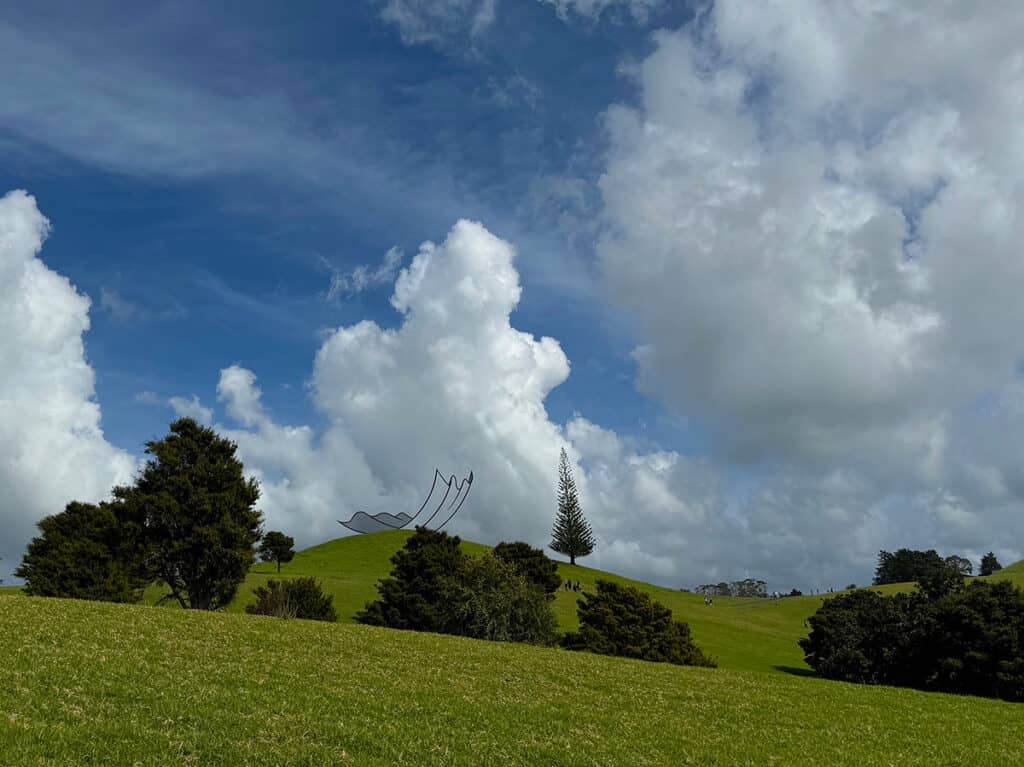
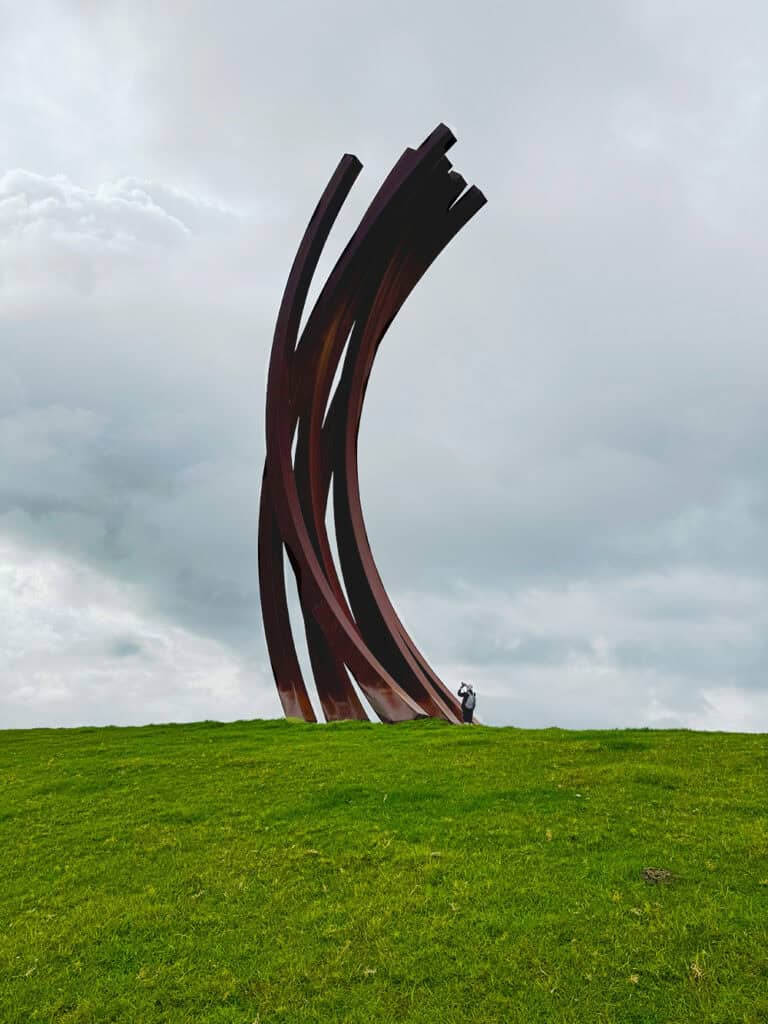
Is there any shelter to have lunch or get out of the rain?
No there really isn’t. You could theoretically find a dry spot under the giant red horn at the top of the circuit, but that’s about it. Events go on in all weather. Just bring an umbrella and your gumboots!
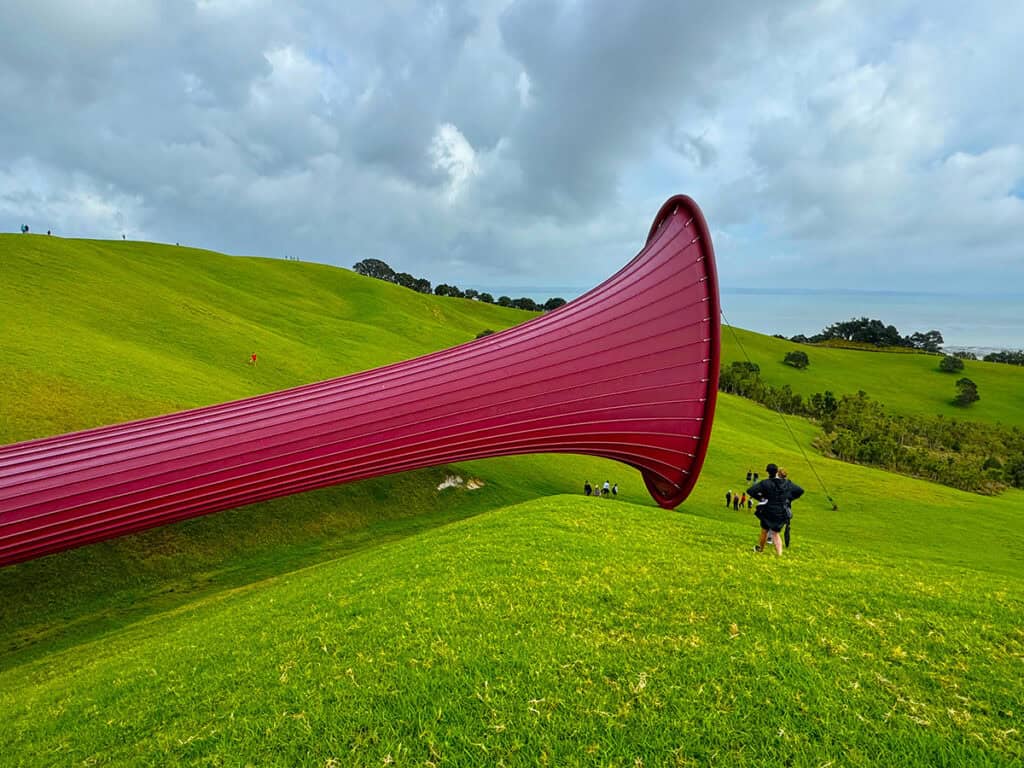
Tips for taking photos at Gibbs Farm
The sculptures are so impressive and really huge, it’s hard to capture. You need to get people in your shots to show perspective. Even selfies won’t work as your face will be too big!
Other tips are putting the sculpture at the bottom of your frame and letting the sky above dominate. Try crouching in front and tilting your phone/camera and see what effect that has.
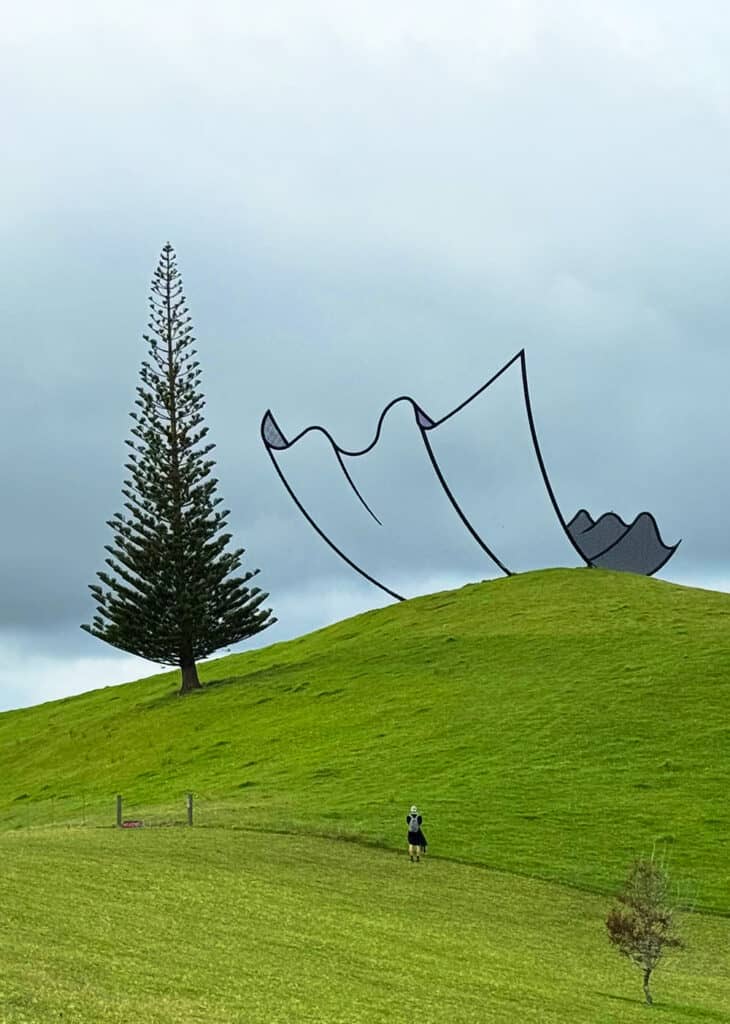
Look where the sun is and move around the sculpture to hide the sun behind it which will create an ethereal effect.
If you’re photographing the animals try and get them looking straight at you. Animal pics are always best if it’s looking at you.
Go up close to the reflective pieces and have fun with those.
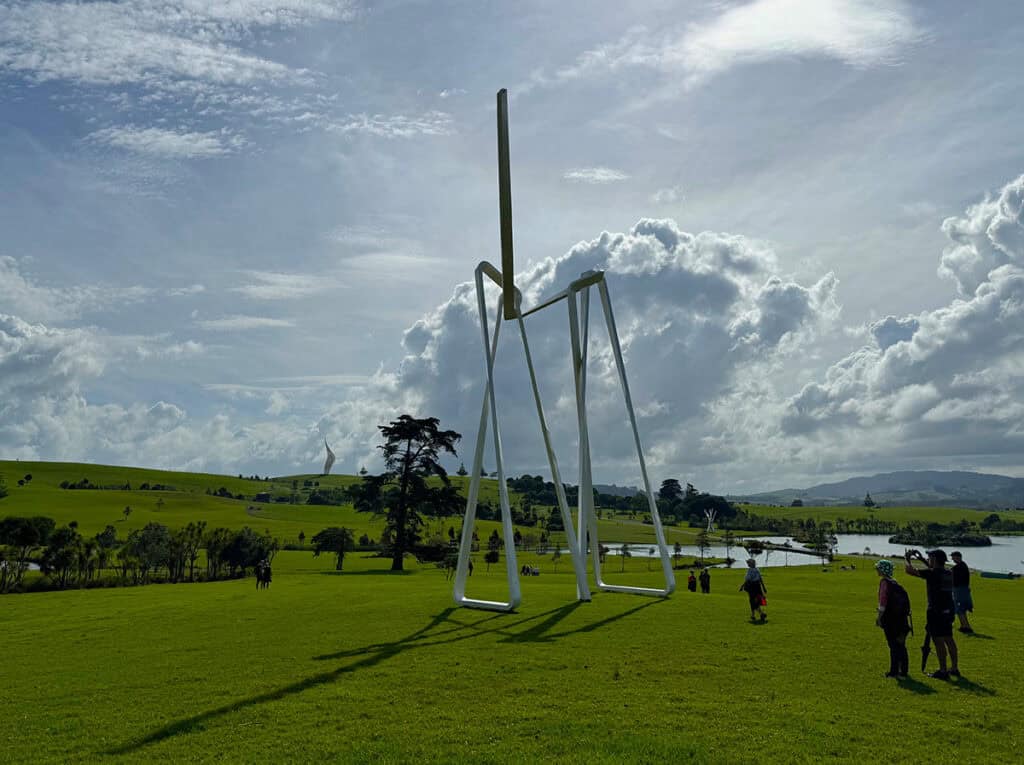
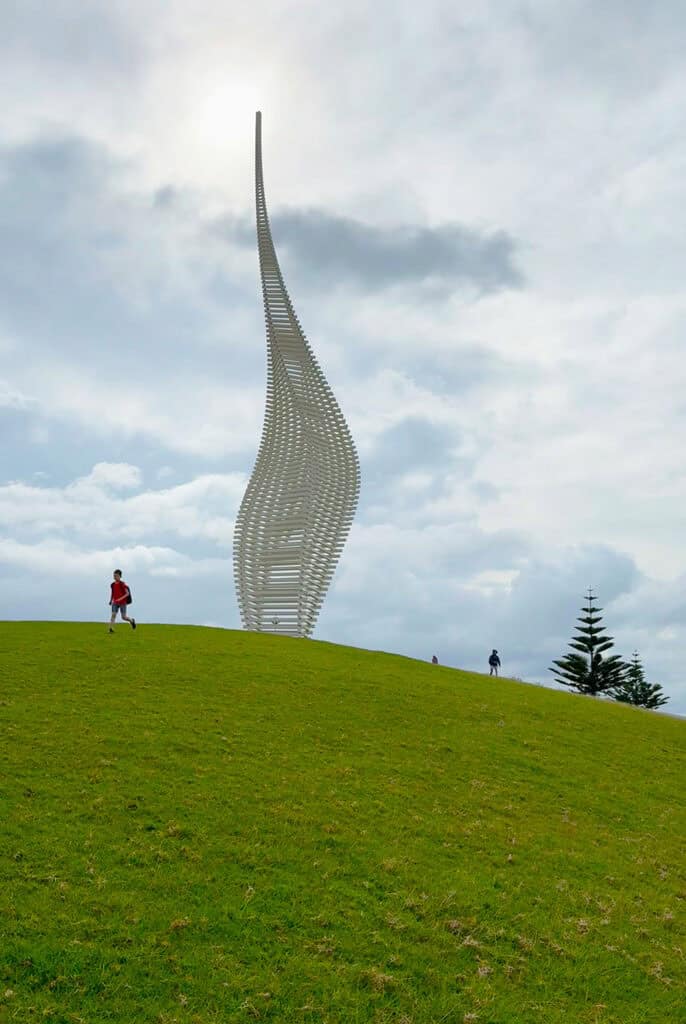
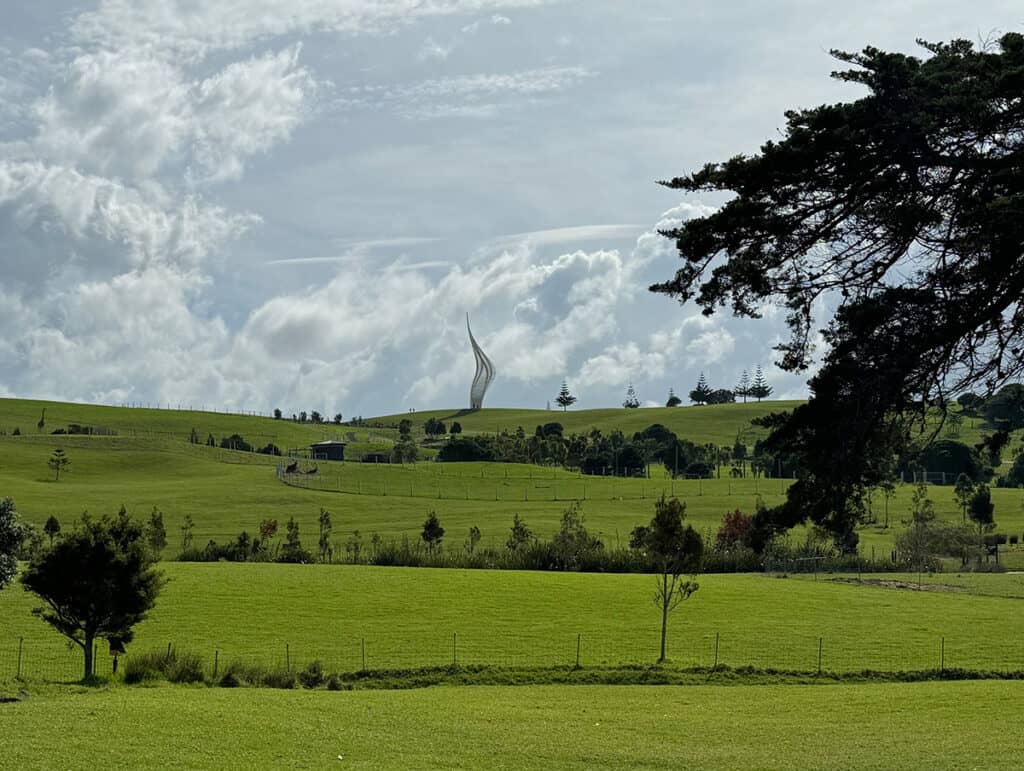
Want to see more of New Zealand?
You’re already out of Auckland, so why not go on up to the beautiful Bay of Islands and follow this 3-day itinerary?
Or maybe just a little further north to Matakana where much smaller sculptures can be seen at the Sculptureum, and have lunch at the lovely cafe there. I’ve written about 10 things to do within cooee of Matakana.

About Megan Singleton
Hi, I'm Megan Singleton and I'm the (award-winning!) word slinger of this travel blog as well as travel correspondent on radio in NZ every Sunday. I set off on this travel writing journey 25 years ago and I've pretty much always got a suitcase half packed (or half un-packed!) Thank you for reading.